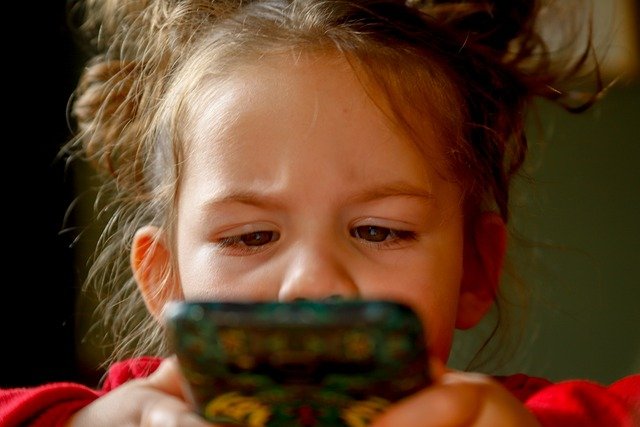Personal cell phone use isn’t just rampant among adults. It’s slowly become a way of life for kids, including children under 10 years old. Yet nearly half of parents worry about the potential negative effects of phone use. Still, most moms and dads accept that their kids will have to learn how to safely use a phone eventually.
If you feel like the time is right to buy a kids phone, you have some choices. This includes explaining to your preteen or teen that you’re going to check the phone regularly. While you’re investigating the phone, you’ll want to be on the lookout for a few apps. Though apps can be handy, they can also put young people at risk or be wildly addictive.
What apps are red flags? Below are some groupings of apps to watch out for on your child’s phone. Remember that as long as you’re paying for the device, you have the right to remove the app. And if you feel your child doesn’t need access to apps, choose a first kids phone without app download capability.
-
Apps that hide information.
You check your child’s phone and only see what looks like a Calculator app. No problem, right? Maybe, but do some double-checking.
Many app developers have created apps that look like utility-style tools, such as calculators. They’re great for concealing information such as videos, images, and more in plain sight. In other words, they help kids keep secrets from their parents.
For this reason, you should investigate any app that seems out of place or a little too “functional.” Or, just ask your child to show you how the app works and see what happens.
-
Apps that connect strangers.
A lot of apps are available that encourage complete strangers to meet up or have conversations. Some of these are dating apps. All are meant to be used by adults, not by kids. However, age gates can be simple to bypass for a child willing to fib about his or her birthday.
Even Facebook’s Messenger app isn’t secure, so don’t assume that a big name means better safety. Any app that tries to get people to share information with your kids is a bad idea, anyway. Many apps show the phone’s location, like Live.me or Whisper, which could put a youngster in danger.
-
Apps that connect to social media.
Social media and apps go hand-in-hand. Before you allow your child to have a phone, have a long talk about popular social media sites like Snapchat, TikTok, and Instagram. These apps make putting information on the web effortless. They also expose your child to everything from bullying to the need for social validation.
Surprised to see a social media site on your kid’s phone? Before erasing it, sit down for a long talk. Find out why your child chose that platform. And be aware that some social media may be useful, depending upon your kid’s age. Teenagers feel more connected when they can chat with their friends or share Streaks on Snap. Consequently, your goal should be to figure out what makes sense based on their age and maturity level.
-
Apps that are for dating.
No kids should have a dating app on their phone. Period. Whether you notice something like MeetMe, Bumble, Tinder, or Coffee Meets Bagel, get rid of it. Your child might want to date, but dating through the Internet isn’t something that you probably want.
Will your son or daughter become angry? Maybe. Nevertheless, your role is to protect them from harm. Allowing them to get to know people without your consent and on a forum meant for dating isn’t smart. If your teen wants to date, you should have a conversation about the rules. And those rules should include no dating people they don’t know in person.
-
Apps that gamify people profiling.
The app Hot or Not might sound like kind of a kick. You get to see pictures of people and rate their attractiveness. But it’s anything except fun and games. At its core, this app glorifies objectification and encourages adult discussions.
Again, Hot or Not was originally meant for adults, but has become a “game” to kids. Don’t let your children rate other people based on what they look like. It’s unhealthy and can cause them to have lowered self-esteem.
Best Practices When It Comes to Helping Your Child Navigate a First Kids Phone
After removing all the apps from the first phone you give your child, take a deep breath. Then, remind yourself of the best practices when it comes to dealing with phone use.
First, talk about the phone with your child—a lot. Don’t allow your child to pretend it doesn’t exist. You want the phone use to be in the open.
Secondly, create parameters in terms of when your youngster can use the phone. For instance, you might want to specify certain hours like after school or when homework is finished. Be sure your child understands that you’re serious. Be ready to take the phone if necessary for breaking the rules.
Next, make bedrooms places where a young kid can’t use the cell phone. Keep the phones charging in a common place, such as the kitchen or living room, at night. That way, your child won’t stay on the phone all night.
Finally, take a moment to look at your apps, too. Are there any on your phone that it’s time to scrub? There’s nothing wrong with practicing what you preach by cleaning up your screens. Plus, you’ll be happy that your device isn’t cluttered with apps that you rarely use, anyway.
Getting your child a first phone can be both exciting and worrisome. Be sure it’s the former and not the latter by frequently checking the phone for unwanted apps.

